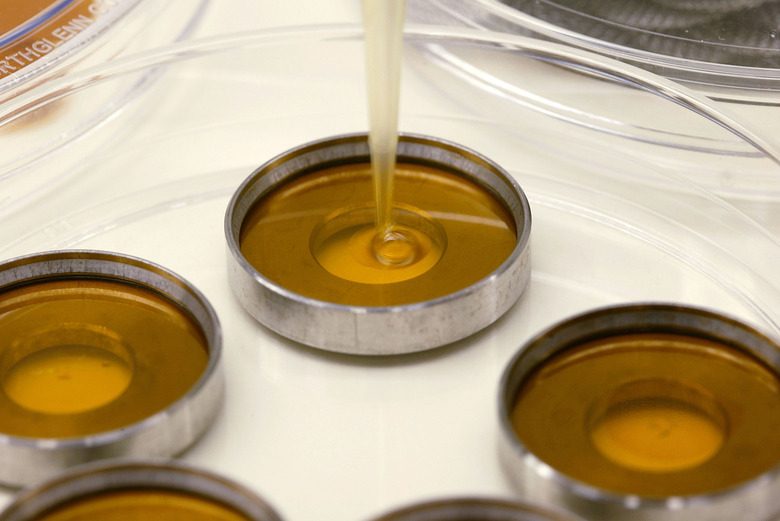What Is The Function Of The Enzyme Ligase In Forming Recombinant DNA?
Most work that is done in a living cell is done by its proteins. One thing a cell has to do is to duplicate its DNA.
In your body, for example, DNA has been duplicated trillions of times. Proteins do that job, and one of those proteins is an enzyme called DNA ligase. Scientists recognized that ligase could be useful in building recombinant DNA in the lab, so they incorporated a ligation step into the process of creating recombinant DNA.
The Structure of DNA
The Structure of DNA
A single strand of DNA consists of a sequence of nitrogenous bases that go by the abbreviations A, T, G and C. Normally, DNA is found in a double strand, where one long sequence of bases is matched up with another equally long strand of bases.
The two strands are complementary, in that where one strand has an A the other has a T, and where one has a G, the other has a C. The A and T match each other through a weak chemical bond called a hydrogen bond, and G and C do the same.
Altogether, the two complementary strands are joined to each other through many hydrogen bonds. Each of the two individual strands hold their own nuclear bases together with a stronger bond in the form of a long chain of sugar and phosphate groups covalently connected.
Ligase Function
Ligase Function
You can think of a DNA strand as one long charm bracelet with four different types of charms. The charms just hang off the strong chain that is connecting them together.
DNA replication builds another charm bracelet matched to the first. Wherever there's an A charm on the first bracelet, a T charm will fit on the second bracelet, and the same for C and G.
The charms on the second bracelet can match to the first bracelet without being on a bracelet themselves. That is, they can connect up to the opposite chain through a weak connection without having a strong chain to connect them to their neighbors.
The DNA ligase enzyme detects places where the sugar and phosphate chain is broken, and rebuilds the link, connecting the sugar and phosphate groups in a strong bond.
Recombinant DNA
Recombinant DNA
Recombinant DNA is the result of cutting a double strand of DNA and connecting it to another double strand. Each double strand is often cut unevenly, with one strand ending a few bases short of the other.
There are extra bases hanging off one end, as in TTAA, for example. The other double strand has extra bases in a sequence like AATT. The two sets of extra bases — called "sticky ends" — grab onto each other through their weak hydrogen bonds.
Thinking of charm bracelets again, imagine you have one double charm bracelet with two chains connected only through their charms. You snip off the end, but you snip one end four charms short of the other, so there's a little tail hanging off.
You do the same thing to another double charm bracelet. If the four charms complement each other, the two snipped charms will connect up, but only through their charms.
Ligase Enzyme Used in Recombination
Ligase Enzyme Used in Recombination
In the prior step of DNA recombination, matched sticky ends of two different double-stranded DNA molecules have connected up. However, the only connection between the two sections is through the weak bonds. Like the charm bracelet connected only through the matching charms, it would be easy to pull them apart.
The DNA ligase enzyme finds the places where the sugar and phosphate groups are not connected together and it links them up. Again, like the charm bracelet, after DNA ligase comes through and chains the bases together, the new, longer, double-stranded DNA molecule is strongly connected together.
Cite This Article
MLA
Gaughan, Richard. "What Is The Function Of The Enzyme Ligase In Forming Recombinant DNA?" sciencing.com, https://www.sciencing.com/function-enzyme-ligase-forming-recombinant-dna-23090/. 19 June 2019.
APA
Gaughan, Richard. (2019, June 19). What Is The Function Of The Enzyme Ligase In Forming Recombinant DNA?. sciencing.com. Retrieved from https://www.sciencing.com/function-enzyme-ligase-forming-recombinant-dna-23090/
Chicago
Gaughan, Richard. What Is The Function Of The Enzyme Ligase In Forming Recombinant DNA? last modified March 24, 2022. https://www.sciencing.com/function-enzyme-ligase-forming-recombinant-dna-23090/
